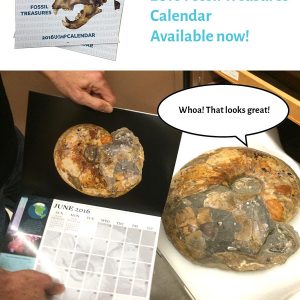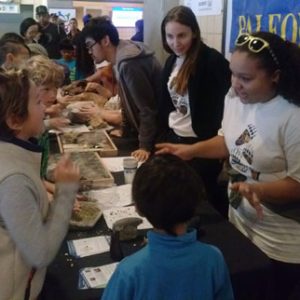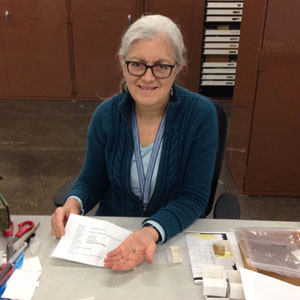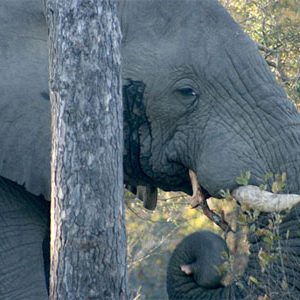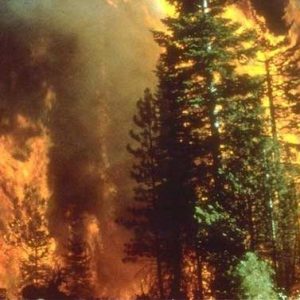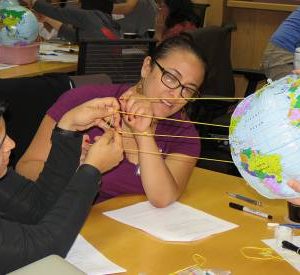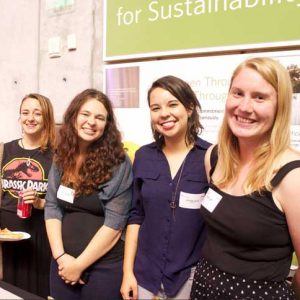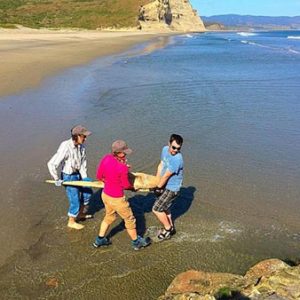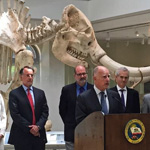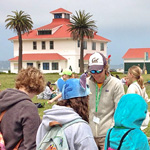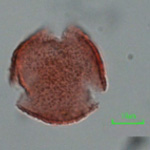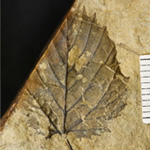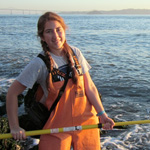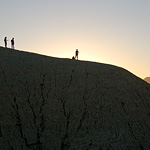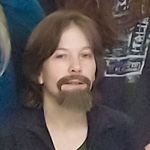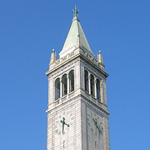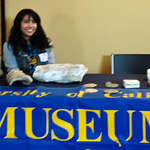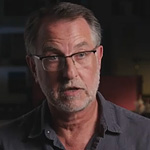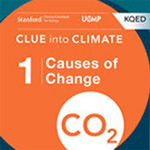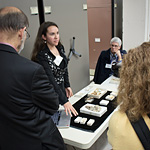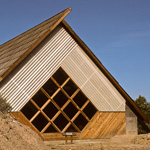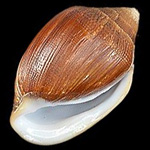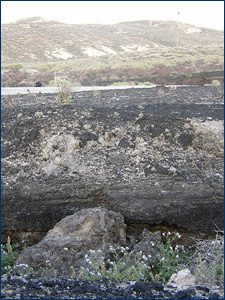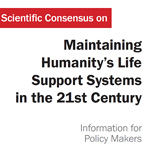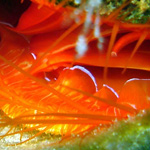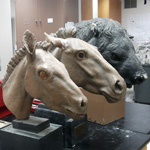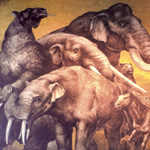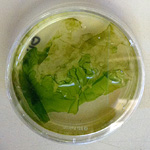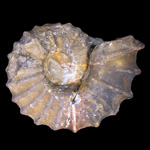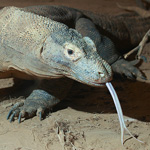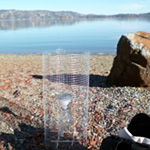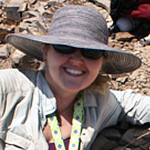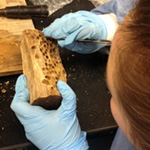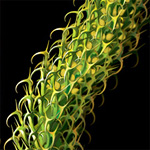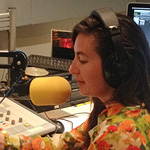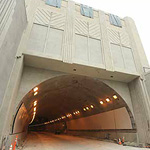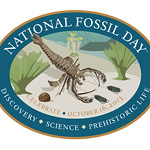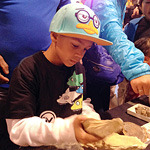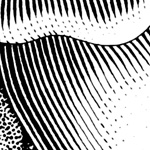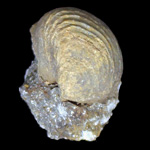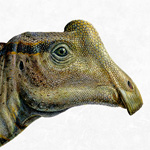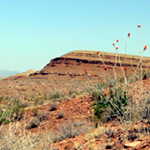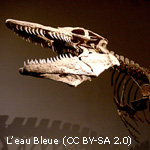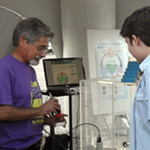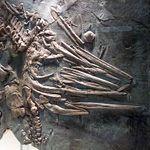Sharing the Collections at UCMP The new year's calendar focuses on the collections and the unique specimens that can be found here. UCMP is a research museum, which means that access is limited to researchers, our students, and affiliates. The 2016 calendar allows us to bring the collections to our supporters and the general public. Grants from the National Science Foundation and the Institute of Museum and Library Sciences enabled us to restore, catalog and digitize new specimens more rapidly … [Read more...] about The 2016 Fossil Treasures Calendar is now available at UCMP
UCMP students help the public unleash their inner scientist
On November 7 UCMP participated in the Bay Area Science Festival Discovery Day at AT&T Park. Discovery Day is the closing event of the annual Bay Area Science Festival – a science extravaganza offering a wide range of science and technology activities in a variety of venues over a two-week period. The UCMP joined other Science@Cal exhibitors for the fifth straight year by engaging youth and families in fossils and life of the past, highlighting what lived at AT&T Park before the Giants! … [Read more...] about UCMP students help the public unleash their inner scientist
UCMP volunteers discover important specimen
UCMP volunteers Kathy Zoehfeld and Don Pecko recently discovered a type specimen from the Smithsonian National Museum of Natural History among the hundreds of thousands of fossils in the former USGS Menlo Park collection. This type specimen, a tiny gastropod called Ceratia nixilia, was discovered in a drawer of fossils they were rehousing into new archival boxes. Don and Kathy not only noticed the less than a centimeter long gastropod, but brought it to my attention because they noticed the … [Read more...] about UCMP volunteers discover important specimen
Landscapes change forever when large mammals disappear
Research on the extinction of large mammals by members of the Barnosky Lab and their colleagues highlights how entire landscapes are affected when modern elephants and their extinct relatives, mastodons and mammoths, disappear. From plants that are no longer grazed to fewer nutrients in soils, the loss of megafauna significantly impacts ecosystems in a dramatic fashion as detailed in recent articles and interviews. Learn more about this recent research: SF Gate Science World … [Read more...] about Landscapes change forever when large mammals disappear
Five Climate Tipping Points We’ve Already Seen, and One We’re Hoping For
This week is Climate Week in New York, when President Obama, Pope Francis, and many other world leaders converge to continue hammering out commitments intended to limit global warming to 2 degrees C or less, to be presented at the make-or-break COP21 climate meetings in Paris in early December. The commitments are not there yet--so far those on the table would allow enough greenhouse gas emissions to raise temperature 3 degrees C or more. But staying below 2 degrees is critically important, for … [Read more...] about Five Climate Tipping Points We’ve Already Seen, and One We’re Hoping For
UCMP and Stanford partner on a global change workshop for teachers
Middle and high school science teachers received double the resources when UCMP and Stanford's School of Earth, Energy & Environmental Sciences teamed up to offer a week-long workshop on global change. Read more about the workshop on Stanford's blog … [Read more...] about UCMP and Stanford partner on a global change workshop for teachers
UCMP science casual: Dinosaur NightLife at the California Academy of Sciences
Imagine over 3,000 adults in San Francisco’s California Academy of Sciences (Cal Academy) for a night of fun special exhibits, drinks, and a serious science social. Now imagine it every Thursday. On July 23rd a dinosaur-themed Cal Academy NightLife event called upon volunteers from UCMP to showcase and explain the mysteries of these monsters beside their contemporary chews. The NightLife also featured a tour of Cal Academy’s library archives about the historic “Bone Wars” between Victorian … [Read more...] about UCMP science casual: Dinosaur NightLife at the California Academy of Sciences
New research shows how mammals became smaller in response to dramatic climate warming
Fifty-six million years ago the Earth underwent a dramatic warming event, with temperatures increasing by as much as 7° Celsius over a span of just 100,000 years. Many mammals responded to this temperature increase by becoming much smaller. How these changes happened, however, is poorly understood. Identifying and measuring the mechanisms that drove these changes was the focus of a new study by University of California Museum of Paleontology researchers Brian Rankin and Pat Holroyd, and … [Read more...] about New research shows how mammals became smaller in response to dramatic climate warming
Partnership with Point Reyes National Seashore leads to important discovery of marine specimen
UCMP's partnership with Point Reyes National Seashore (National Park Service) has resulted in the discovery and collection of an important marine mammal specimen. This specimen is currently being prepared by UCMP Research Associate Robert Boessenecker, and will be reposited at UCMP. Lillian Pearson, a Geoscientist-in-the-Park intern, is setting up protocols for the long-term monitoring of paleontological resources (fossils) at Point Reyes. Erica Clites did this type of work for the National Park … [Read more...] about Partnership with Point Reyes National Seashore leads to important discovery of marine specimen
Barnosky meets with Governor Jerry Brown and a United Nations delegation to discuss climate change
On June 15, UCMP Curator and Integrative Biology Professor Tony Barnosky met with Governor Jerry Brown, Executive Secretary of the UN Framework Convention on Climate Change Christiana Figueres, and California climatologists at the Los Angeles County Museum of Natural History to discuss global warming and the consequences of failing to deal with it. At a press conference following the meeting, Brown expressed his desire to reduce California’s greenhouse gas emissions by 40 per cent over the next … [Read more...] about Barnosky meets with Governor Jerry Brown and a United Nations delegation to discuss climate change
UCMP participates in Girl Scouts’ “bridging” event
Every May for the past 30 years or so, the Girl Scouts of Northern California have celebrated the advancement of their scouts from Junior to Cadette status by a symbolic walk across the Golden Gate Bridge. Following this year’s May 2 event, the scouts continued on to Crissy Field where they enjoyed entertainment and information booths. And UCMP was there to celebrate with the scouts. For the third year in a row, UCMP hosted a table staffed by an enthusiastic crew that included graduate student … [Read more...] about UCMP participates in Girl Scouts’ “bridging” event
A morphological study of living and fossil Quercus (oak) pollen from California using scanning electron microscopy
California has more than 26 oak (Quercus) species, many of which have widespread distributions and different habitats. For example, the California black oaks (Q. kelloggii) are distributed in foothills and low mountains (altitude ~4750 feet), while the Coast live oak (Q. agrifolia; altitude ~830 feet) lives near the coast. Palynologists study the distribution of plant pollen and spores in space and time, and changes in their assemblages reflect changes in regional and local vegetation. In the … [Read more...] about A morphological study of living and fossil Quercus (oak) pollen from California using scanning electron microscopy
Building a forest: The adventures continue in the Jose Creek Member
It's April 18, 2015, and I am sitting in a room at the Charles Motel in Truth or Consequences, New Mexico, the same apartment-style room that I have stayed in during the past four years of field work. Time sure has passed by quickly; from my first paleontological dig as an undergraduate at Texas State University-San Marcos under Dr. Gary Upchurch, to my ambitious inaugural self-guided field trip as a first-year graduate student at Berkeley, to last year's even longer field excursion, and finally … [Read more...] about Building a forest: The adventures continue in the Jose Creek Member
Do green tide algae reproduce all year?
Occurrences of green tides have been on the rise in recent years worldwide. The most impressive have been reported off the coast of China in the Yellow Sea. In August 2014, the Monterey Bay area experienced a green tide that resulted in the accumulation of the macroalgae, Ulva, on its beaches. Algal blooms often make the headlines in spring and summer yet they are not a new phenomenon. In fact, toxic algal blooms may have been responsible for bird, fish and marine mammal die-offs recorded in … [Read more...] about Do green tide algae reproduce all year?
Southern California Spring Break 2015 field trip
Annual field trips used to be something of a tradition at UCMP, but that tradition faded once the Department of Paleontology merged with other units to become the Department of Integrative Biology in 1989. In recent years, former UCMP Director Jere Lipps organized and led three field trips: Baja in 2001, southern California in 2008, and Oregon in 2009. And now two of UCMP’s newest curators, Assistant Professors Seth Finnegan and Cindy Looy, are trying to revive the annual field trip tradition. … [Read more...] about Southern California Spring Break 2015 field trip
The Bearded Lady Project comes to the UCMP
The Bearded Lady Project: Changing the Face of Science came to the UCMP in February, one of many stops in a photographic journey made by documentary film makers seeking to educate the public on gender inequities in geoscience fields, particularly in paleontology. Women of the UCMP sat for portraits that will become part of a photography series intended to celebrate adventurous women who are true pioneers in the fields. See if you can recognize some of your favorite women of the UCMP! … [Read more...] about The Bearded Lady Project comes to the UCMP
Fossils in the Campanile? It’s true!
If you have taken the elevator to the top of Sather Tower, aka the Campanile, perhaps you've heard that some of the floors of the tower are filled with fossils. This is not a campus myth, it's fact! The Campanile is celebrating its 100th anniversary this year and its very first occupants — moving in before the tower was even completed — were fossils. At that time, the museum and Department of Paleontology were in Bacon Hall, just east of the Campanile, so as a storage facility, the … [Read more...] about Fossils in the Campanile? It’s true!
UCMP participates in the Bay Area Science Festival for fourth straight year
On November 1, UCMP participated in Discovery Days at AT&T Park, the closing event of the annual Bay Area Science Festival. The museum has been a Science@Cal exhibitor at the Festival for four years running. This year, over 30,000 people enjoyed 200 free activities and exhibits at the Festival, a “science extravaganza.” The Festival is meant to entertain and inspire; it’s where visitors can unleash their inner scientist. … [Read more...] about UCMP participates in the Bay Area Science Festival for fourth straight year
UCMP curator and Integrative Biology professor keeps attention focused on climate change and mass extinction
On November 30, the Smithsonian Channel will air the film Mass Extinction: Life at the Brink featuring UC Berkeley researchers Walter and Luis Alvarez, as well as UCMP’s Tony Barnosky; and Stanford University’s Elizabeth Hadly and Jon Payne. The film describes what we know about the Cretaceous-Paleogene boundary, how we know it, and how the Cretaceous-Paleogene and end-Permian mass extinctions relate to our present extinction crisis. Learn more at smithsonianchannel.com and … [Read more...] about UCMP curator and Integrative Biology professor keeps attention focused on climate change and mass extinction
UCMP expertise tapped for new KQED e-book series on climate change
KQED partnered with UCMP and Stanford University’s Precourt Institute for Energy to produce a four-part e-book series entitled Clue into Climate. Lisa White, UCMP’s Assistant Director for Education and Public Programs, says “These new e-books bring climate research to life and create greater access to information about climate and global environmental change in an easy to understand package.” The e-books explore the topic through a blend of high-quality media, interactive graphics and … [Read more...] about UCMP expertise tapped for new KQED e-book series on climate change
UCMP expands its Homecoming Weekend program
In previous years, UCMP’s involvement with UC Berkeley’s Homecoming Weekend was limited to a single tour of the collections (normally closed to the public), but this year, the museum decided to expand on that and offer something a little different for its Friends and donors. On Friday, October 10, Assistant Director for Collections and Research Mark Goodwin started things off with his annual tour of the collections, but that was followed by an afternoon lecture by UCMP Curator and Integrative … [Read more...] about UCMP expands its Homecoming Weekend program
The 2015 UCMP Fossil Treasures Calendar now available
UCMP and the development of the ichthyosaur quarry at Berlin-Ichthyosaur State Park The focus for the 2015 calendar became Nevada’s Berlin-Ichthyosaur State Park when a trove of 35 mm slides and black & white prints chronicling the development of the ichthyosaur quarry was found in the museum archives. These images, from the Charles L. Camp Papers, dominate the calendar, however, there are also slides from the collections of Sam Welles and Joe Gregory, images from the Huff family archives, … [Read more...] about The 2015 UCMP Fossil Treasures Calendar now available
Air-breathing snails, old and new
The UC Museum of Paleontology (UCMP) is home to more than five million invertebrate fossil specimens, a majority of them being marine in origin. While rehousing the US Geological Survey’s Menlo Park collections, I came across specimens of Actinella, a genus of terrestrial gastropod. The earliest known air-breathing gastropods in the fossil record appeared during the Carboniferous Period, Carboniferous being a reference to the abundant coal deposits formed at this time, 359 to 299 million years … [Read more...] about Air-breathing snails, old and new
New UCMP grant to curate the Pleistocene-Holocene McKittrick tarpit fossil collection
UCMP is pleased to announce the award of a new $149,713 grant from the Institute of Museum and Library Services to curate, rehouse, and capture digital images of the important Pleistocene-Holocene McKittrick tarpit fossil collection from Kern County, California. The McKittrick tarpits were excavated by Cal scientists in the 1930s and yielded thousands of bones of extinct and extant mammals, birds, and reptiles. The area was eventually designated a California State Historical Landmark due to the … [Read more...] about New UCMP grant to curate the Pleistocene-Holocene McKittrick tarpit fossil collection
Paleontological field work and nuclear testing
In the mid to late 1950s, Charles L. Camp, Professor in the Department of Paleontology and former Director of UCMP (1930-1949), spent his summers working at what would later become Berlin-Ichthyosaur State Park, about 55 miles north of Tonopah, Nevada, and 150 miles northwest of Yucca Flat at the Nevada Test Site. Beginning in 1951 and ending in 1992, the United States did extensive nuclear testing at Yucca Flat. There were 739 tests conducted there, resulting in Yucca Flat being called “the … [Read more...] about Paleontological field work and nuclear testing
New fossil footprint exhibit debuts online
Visit the new UCMP/University of Colorado online exhibit on fossil tracks! It is fascinating to consider that fossil footprints and trackways offer direct physical evidence that ancient animals passed through an area long ago. However, these trace fossils also provide important clues that shed light on several aspects of paleobiology, such as anatomy, locomotion patterns, behavior, and footprint preservation. The website provides basic information about the preservation of fossil tracks, how … [Read more...] about New fossil footprint exhibit debuts online
Global change consensus statement having a global impact
Over a year ago in a May 30, 2013, blog post, we reported on Professor of Integrative Biology and UCMP curator Tony Barnosky’s presentation to Governor Jerry Brown of a statement about global environmental problems and what people must do to ensure the health of the planet. That statement was written at Brown’s request after the Governor had heard about a Nature paper that Barnosky had coauthored with his wife, Stanford professor of Biology and UCMP research associate Elizabeth Hadly, and … [Read more...] about Global change consensus statement having a global impact
Making the Earth sciences engaging and relevant for broader communities
Historically, paleontology has been a male-dominated field. Over the past few decades, more and more women have entered the field, but female African-American paleontologists remain a rarity. Lisa White, UCMP’s Assistant Director of Education and Public Programs, is one of these rare women. She spent 22 years as a faculty member at San Francisco State University and held the titles of Professor and Associate Dean when she came to Berkeley in 2012. White was profiled recently in California, UC … [Read more...] about Making the Earth sciences engaging and relevant for broader communities
Flash! Grad student discovers how Ctenoides ales, the “disco clam,” flashes
Back in 2010, while diving in Indonesia, Lindsey Dougherty first witnessed the flashing behavior of the so-called “electric clam” or “disco clam,” Ctenoides ales. She decided then and there that the focus of her Ph.D. would be the study of these fascinating bivalve mollusks. Now, four years later, Dougherty reports in the British Journal of the Royal Society Interface just how the flashing works. A nice description of the mechanism and a video showing the flashing behavior is provided in … [Read more...] about Flash! Grad student discovers how Ctenoides ales, the “disco clam,” flashes
75-year-old sculptures by William Gordon Huff relocated
For the past three years or so I have been researching the life of sculptor William Gordon Huff. Never heard of him? That’s not too surprising since he didn’t have gallery shows and, to my knowledge, no major museum has examples of his work. But, if you do any traveling in California, there’s a good chance that you’ve seen Huff’s work without even knowing it, because most of his sculpture was public art, primarily in the form of bronze bas reliefs for historical plaques. Huff’s plaques can be … [Read more...] about 75-year-old sculptures by William Gordon Huff relocated
Where have all the mammoths gone? And why do we care?
What’s the first thing that comes to mind when you think of Africa? Probably a lot of big animals, right? Elephants and lions, zebras and cheetahs, hippos and rhinos, giraffes, and enormous herds of wildebeest moving across the savannah. Well, what a lot of people don’t realize is that for most of the past 50 million years, most of the world looked a lot like Africa! Not that long ago, Europe, Asia, and North and South America all hosted relatives of elephants, zebras, and lions inhabiting … [Read more...] about Where have all the mammoths gone? And why do we care?
Mighty microbes implicated in Permian mass extinction
Ninety-six percent of marine and 70% of terrestrial species died in the Permian mass extinction, which began about 252 million years ago and lasted for over 20,000 years. Geochemistry tells us that this extinction coincided with a severe and rapid change in the Earth’s carbon cycle, but this alone could not have been the cause of the extinction. Initially it was thought that carbon dioxide released by Siberian volcanism explained this change in the carbon cycle but the volcanic outgassing was … [Read more...] about Mighty microbes implicated in Permian mass extinction
Tracking down ammonites in the Denver, Colorado, area
In July 2013, I visited the Denver, Colorado, area to collect data from two collections housed at United States Geological Survey (USGS) facilities and the University of Colorado (CU) Museum of Natural History. The USGS collections are housed in the Core Research Center on the Denver Federal Center campus. The building is also a repository for a large collection of soil samples and approximately 1.7 million feet of drilled rock, sediment, and ice cores. The Museum of Natural History is … [Read more...] about Tracking down ammonites in the Denver, Colorado, area
Examining morphologic variation in varanid skulls through time and space
As a graduate student affiliated with the UCMP, there are many resources readily available to me. Not only does the museum have the largest university research collection, but the curators, museum scientists, and staff are some of the most knowledgeable and helpful anywhere. UCMP is recognized for taking care of its graduate students, and one of the ways they do it is by providing multiple funding opportunities. I applied to UCMP for funding last year in order to conduct museum travel for my … [Read more...] about Examining morphologic variation in varanid skulls through time and space
California pollen taphonomy and pollen trap study in Clear Lake, California
Pollen analysis (or palynology) has been used to study Quaternary changes in vegetation and climate in North America since the nineteenth century. Palynologists generally compare plant assemblages in spatial-time frames instead of focusing on particular plant species. These changes in plant assemblages across landscapes through time are a good indication of vegetation shifts caused by environmental changes. Besides using pollen assemblages to reconstruct parent plant communities in a particular … [Read more...] about California pollen taphonomy and pollen trap study in Clear Lake, California
The hunt for a Ph.D. thesis: Collecting Late Cretaceous plant fossils in New Mexico
"It ain't Mexico and it ain't new" [quoted from a postcard in a gift shop] Armed with hammers, chisels, pry-bars, boxes of newspaper, and sunscreen, two trusty assistants (recent graduate Meriel Melendrez and current undergrad Nicolas Locatelli) and I drove from Berkeley in our 4WD extra-long SUV heading for southern New Mexico. There, we met up with paleobotanist Dr. Gary Upchurch and crew from Texas State University and geologist Dr. Greg Mack from New Mexico State University for two weeks of … [Read more...] about The hunt for a Ph.D. thesis: Collecting Late Cretaceous plant fossils in New Mexico
Waterlogged wood on the seafloor and the critters that call it home
For a marine biologist, I spend a lot of time thinking about wood. What happens to it if it happens to wash into a stream? How much of it gets into the ocean? Where does it sink? What happens to it once it reaches the bottom? What animals are likely to make it their home? I’m far from the first to think about the role of wood in ocean systems. In fact, Darwin thought quite a bit about how plant material might make its way into the ocean and how long different kinds of wood might stay afloat … [Read more...] about Waterlogged wood on the seafloor and the critters that call it home
Grad student’s artwork graces journal cover
“There are great color reconstructions of dinosaurs, so why not a plant?” thought Department of Integrative Biology and UCMP grad student Jeff Benca when he set out to reconstruct the appearance of a 375-million-year-old Devonian plant. Using Adobe Illustrator CS6 software, he constructed a striking three-dimensional, full-color portrait of a stem of the lycopod Leclercqia scolopendra, or centipede clubmoss. This was no small feat, considering that the fossil plant Jeff was illustrating was a … [Read more...] about Grad student’s artwork graces journal cover
Following The Graduates on KALX Berkeley
UCMP and Department of Integrative Biology graduate student Tesla Monson, a second-year graduate student in the Hlusko Lab, is the host of a new talk show, The Graduates, on KALX Berkeley, kalx.berkeley.edu! KALX is a UC Berkeley and listener-supported independent radio station and an ideal platform for The Graduates, a show featuring Tesla interviewing UCB graduate students about their research. Debuting on Tuesday, April 8, at 9:00am, The Graduates will air every other Tuesday, from 9:00 am … [Read more...] about Following The Graduates on KALX Berkeley
The geology and paleontology of the Caldecott Tunnel’s Fourth Bore
The fourth bore of the Caldecott Tunnel opened to traffic on November 16, 2013, and if you're an East Bay resident, chances are good that you've been through it once or twice (at least!). Did you realize that each time you drive through the tunnel you're passing through several million years of accumulated sediment that has been pushed up on its side? Want to know more about the rocks the tunnel cuts through and the fossils found in them? As part of an agreement between UCMP and the California … [Read more...] about The geology and paleontology of the Caldecott Tunnel’s Fourth Bore
Erica, PaleoPortal, and the National Fossil Day connection
Before coming to UCMP, Erica Clites — currently working on an NSF-funded project to rehouse and digitally image the orphaned USGS Menlo Park invertebrate collection out at the Regatta facility in Richmond — spent about two and a half years with the National Park Service. In 2010 she coordinated a nationwide outreach effort for the first NPS-sponsored National Fossil Day, which was held on October 16th this year. Read an interview with Erica about her work with the NPS on the Park … [Read more...] about Erica, PaleoPortal, and the National Fossil Day connection
Who lived here before the Giants?
For the third consecutive year, UCMP participated in the Bay Area Science Festival at AT&T Park as one of several Science@Cal exhibitors. The November 2, 2013, festival drew more than 28,000 science fans and Lisa White, Tripti Bhattacharya, and volunteer CJ Dunford staffed a UCMP table. With a theme of "Who lived here before the Giants?," the UCMP fossil display and activities were a big hit with the little fans! … [Read more...] about Who lived here before the Giants?
The 2014 UCMP Fossil Treasures Calendar is now available
Examples of the scientific illustrator's art Early this past year, as UCMP continued its efforts to catalog the museum's archival collections, a small collection of original scientific illustrations were rediscovered. These pieces represent the work of a number of talented scientific illustrators who produced images for the publications of UCMP curators, staff, and students between the years 1934 and 1991. All who saw these works were impressed by the skill, patience, and steady hand required … [Read more...] about The 2014 UCMP Fossil Treasures Calendar is now available
Encounters in the field: UCMP and the US Geological Survey
Hundreds of specimens from the former USGS Menlo Park Collection, now housed in the UC Museum of Paleontology, were collected in the pioneering days of geological and paleontological exploration of California. This includes fossils collected by Charles A. White, Timothy W. Stanton, Joseph S. Diller and other legendary figures at the US Geological Survey. The newly founded Department of Paleontology at UC Berkeley also led numerous expeditions and excavations of vertebrates in California in the … [Read more...] about Encounters in the field: UCMP and the US Geological Survey
Werning co-authors paper on growth in Parasaurolophus
Recent Ph.D. grad Sarah Werning, now in a postdoctoral position at the State University of New York at Stony Brook, was a major contributor to a paper released today on ontogeny in Parasaurolophus, a Cretaceous hadrosaurid dinosaur notable for the hollow, bony tube on its skull. The study centers around a remarkable skeleton of a baby Parasaurolophus (nicknamed "Joe") discovered in 2009 by Kevin Terris, a student at The Webb Schools in Claremont, California, in exposures of the … [Read more...] about Werning co-authors paper on growth in Parasaurolophus
UCMP hosts phylogenies and fossils workshop
On September 23-25, 2013, the UCMP hosted a workshop on Integrating Molecular Phylogenies and the Fossil Record supported by the France-Berkeley Fund. Led by UCMP Director Charles Marshall and Hélène Morlon from École Polytechnique in France, the workshop brought together leading researchers who are developing methods for inferring diversity dynamics using molecular phylogenies or fossil data. The gathering of approximately 25 people included UC Berkeley faculty and UCMP graduate students and … [Read more...] about UCMP hosts phylogenies and fossils workshop
A trip to New Mexico
Why New Mexico? Like someone else put it "it ain't new and it sure ain't Mexico!" So why make the trek? To attend the Carboniferous-Permian Transition Meeting! Five members of the Looy Lab piled into a van and drove all the way from Berkeley to Albuquerque. With the enormous number of meetings and conferences being organized, why did we decide to go to this particular one? I think there is a checklist that most people go over before they decide on which conference to attend. In random … [Read more...] about A trip to New Mexico
A whale of a find
The upper Miocene-Pliocene Purisima Formation near Capitola, California, is well known among avid fossil collectors and popular with beachcombers. While this seaside shallow marine deposit contains rich assemblages of clams, snails and other invertebrates, fossil vertebrates such as whales, fishes, and birds are the most prized. Happily this is a case in which amateurs and scientists have often partnered to exchange fossils and report findings. Fossil hunters Frank Perry, Stan Jarocki, and … [Read more...] about A whale of a find
Understanding Science is now in Portuguese
Você fala português? If so, you’ll be pleased to learn about Understanding Science’s new Portuguese translation, led by Unversidade de Lisboa Principal Researcher Nuno P. Barradas and his team. Nuno and colleagues recently promoted Understanding Science in Portuguese at a community science event in the town of Estremoz, east of Lisbon. Science on the Streets was organized by Portugal’s national agency for public awareness of science, Ciência Viva ("Living Science"), and the Understanding … [Read more...] about Understanding Science is now in Portuguese
Cataloging the archives: Paleontology specimen exchange
How do natural history museums build their collections? The UCMP's fossil collection is largely a product of decades of field work by past and present researchers. As the State's fossil repository, the museum also receives a large number of fossil finds from construction sites in California (for example, the Caldecott Tunnel). Another, perhaps less appreciated means of acquiring scientifically valuable specimens, is specimen exchange between institutions — it's a bit like a holiday gift exchange … [Read more...] about Cataloging the archives: Paleontology specimen exchange
